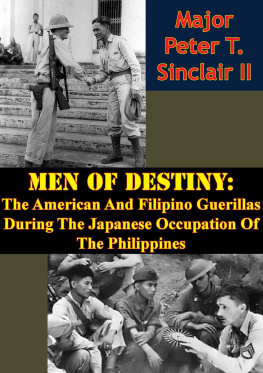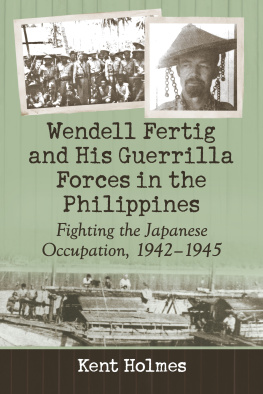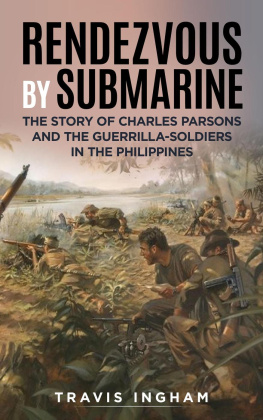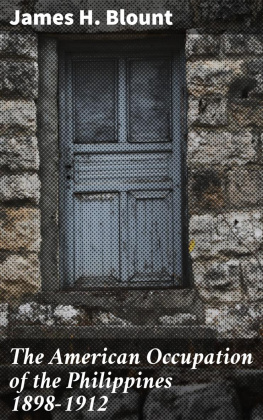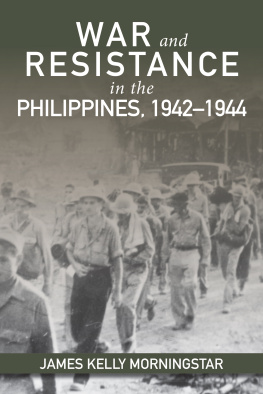This edition is published by PICKLE PARTNERS PUBLISHINGwww.picklepartnerspublishing.com
To join our mailing list for new titles or for issues with our books picklepublishing@gmail.com
Or on Facebook
Text originally published in 2011 under the same title.
Pickle Partners Publishing 2015, all rights reserved. No part of this publication may be reproduced, stored in a retrieval system or transmitted by any means, electrical, mechanical or otherwise without the written permission of the copyright holder.
Publishers Note
Although in most cases we have retained the Authors original spelling and grammar to authentically reproduce the work of the Author and the original intent of such material, some additional notes and clarifications have been added for the modern readers benefit.
We have also made every effort to include all maps and illustrations of the original edition the limitations of formatting do not allow of including larger maps, we will upload as many of these maps as possible.
MEN OF DESTINY: THE AMERICAN AND FILIPINO GUERRILLAS DURING THE JAPANESE OCCUPATION OF THE PHILIPPINES
by
Major Peter T. Sinclair, II
TABLE OF CONTENTS
Contents
ABSTRACT
The American and Filipino guerrillas that fought against the Japanese occupation of the Philippines were key in providing direction to resistance efforts and in the eventual liberation of the islands. The guerrillas escaped the aggressive counter-guerrilla efforts of the Imperial Japanese Army. The Japanese failure to deal with isolated soldiers and civilians provided the time they needed to organize into guerrilla groups and prepare for American forces liberation of the Philippines. This analysis of American and Filipino insurgents covers the effectiveness of Japanese counter guerrilla efforts, the intelligence structure created by General Douglas MacArthurs staff to support the guerrillas, the guerrillas contributions to the liberation of the Philippines, and it examines how Americans would form guerrilla groups and fight as insurgents behind enemy lines if circumstances warranted. Additionally, it provides general insight as to how resistance movements form.
INTRODUCTION
Guerrillas have taken to the field of battle throughout history. Their locations and tactics may have changed over the years but the threat they present is a constant. An evident example comes from American history when civilians fought as guerrillas during the Revolutionary War against the British; however, this is certainly not the only time Americans fought as guerrillas. In reality, during World War II, Americans were put to the test as they fought alongside Filipino nationals as guerrillas in the Philippines during the Japanese occupation of the Archipelago.
The American and Filipino guerrillas were invaluable to the effort to liberate the Philippines from the Japanese occupation during World War II. The combined efforts of the various guerrilla groups directly contributed to the recapture of the Philippines by conducting intelligence operations and, when ordered, kinetic actions such as sabotage and ambushes against the occupying Japanese forces. The guerrillas, both American and Filipino, came from various walks of life. However, Wendell Fertig, the leader of the United States Forces in the Philippines (USFIP) in the island of Mindanao, surmised the sentiment of the leaders of these groups when he stated,
I am called on to lead a resistance movement against an implacable enemy under conditions that make victory barely possible even under the best of circumstances. But I feel that I am indeed a Man of Destiny, that my course is charted and that only success lies at the end of the trail. I do not envision failure; it is obvious that the odds are against us and we will not consistently win, but if we are to win only part of the time and gain a little each time, in the end we will be successful.
The guerrillas not only had to fight against the Japanese, they had to settle disputes amongst themselves, survive the dangers of the jungle, and the stresses of conducting continuous operations for over two years. Their faith in eventual liberation from the Japanese and the fear of the consequences of failure allowed the guerrillas to persevere in the face of overwhelming odds.
Both the history of the fall and the eventual liberation of the Philippines suffer from some common historical misperceptions and myths. This monograph attempts to address the misperceptions surrounding the guerrillas that fought there and analyze their accomplishments. It is important to both address and analyze these misperceptions and myths to gain a pertinent understanding of their success. The first is the myth that the Japanese established total control over the Philippine archipelago. The second is that the occupation of the Philippines was uneventful for the Japanese after the surrender of American and Filipino forces and the solders accepted their fate as prisoners of war. The third and final myth is that General MacArthur and his staff did very little to support the guerrillas within the Philippines
To begin, the first myth is that the Japanese forces exhibited total control over the Philippine archipelago during its occupation. The reality is that while the Japanese did utilize harsh treatment in dealing with the Filipino population and American prisoners of war, the Japanese behavior only served to unite the isolated American citizens and Filipino civilians against them. The Japanese were not monolithic in their views when it came to dealing with the local Filipino population. In fact, some of the Japanese leadership attempted to secure the support of the Filipinos with cooperation versus coercive measures. However, the common Japanese soldier undermined the efforts of those leaders. Additionally, there were never enough Japanese forces within the Philippines to pacify the population.
The second myth was that after the surrender of American and Filipino forces, the defeated servicemen waited to be led to prison camps to await their fate. The truth is that throughout the Philippines, isolated soldiers and civilians were trying to survive. On islands other than Luzon, the Japanese bypassed complete units in order to focus their efforts on capturing Manila and to defeat the combined American and Filipino forces in the Bataan peninsula. These bypassed units simply dissolved and isolated Filipino simply returned home with their arms. The American soldiers evaded capture and tried to survive long enough to wait out the war, sail on to Australia, or formed a guerrilla movement to fight the Japanese. The time lag between the surrender and the Japanese forces rounding up the defeated units allowed small numbers of servicemen to make preparations to flee and survive in the jungle before they were forced into prisoner of war camps. These isolated soldiers faced common challenges and a similar path as they made the transition from defeated soldier to guerrilla fighter. The guerrilla movement went on to provide leadership for the civilian population of Filipinos and expatriates within the archipelago. In some areas, the guerrillas and the civilians worked together to provide the basics of security and governance. The population worked with the guerrillas to provide material support and information on the Japanese. This self-organization and symbiotic relationship quickly turned into a resistance and guerrilla movement.
The third myth is a common belief is that General MacArthur, commander of the American and Filipino forces defending the Philippines, is despite his statement I shall return, did little to provide anything but moral support to those left behind in the Philippines. On the contrary, General MacArthur dedicated tremendous energy and efforts within his command to support the guerrillas and the civilian population within the occupied Philippines. He recognized early on the potential of forming a guerrilla movement on the archipelago and the impact these guerrillas could have in a future campaign, and thus dedicated a significant portion of his intelligence efforts to that end. MacArthurs intelligence staff developed an infrastructure to provide material and moral support to the guerrillas. Additionally, the intelligence staff organized to exploit the intelligence collected and provided by the guerrillas. The intelligence gathered by the guerrillas assisted in developing invasion plans and provided landing units timely updates as to Japanese composition and disposition in the immediate vicinity. MacArthur and his staff provided material support and guidance that led to the guerrillas conducting synchronized offensive operations against the occupying Japanese forces shortly before the American invasion. The guerrilla operations inflicted significant damage on the Japanese and hindered their ability to respond to the American landings.


